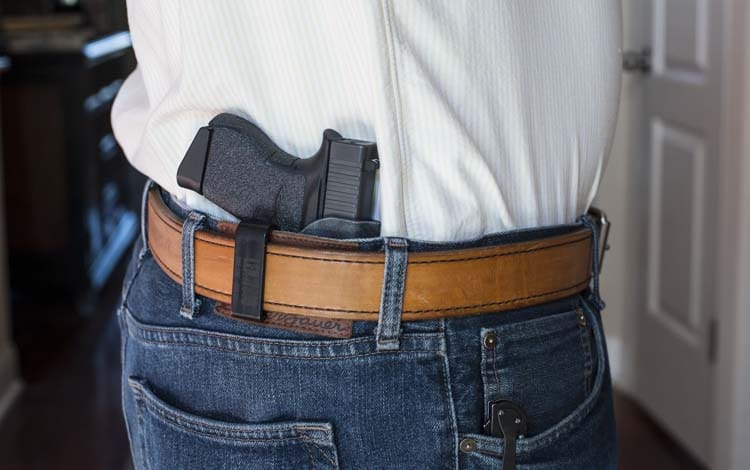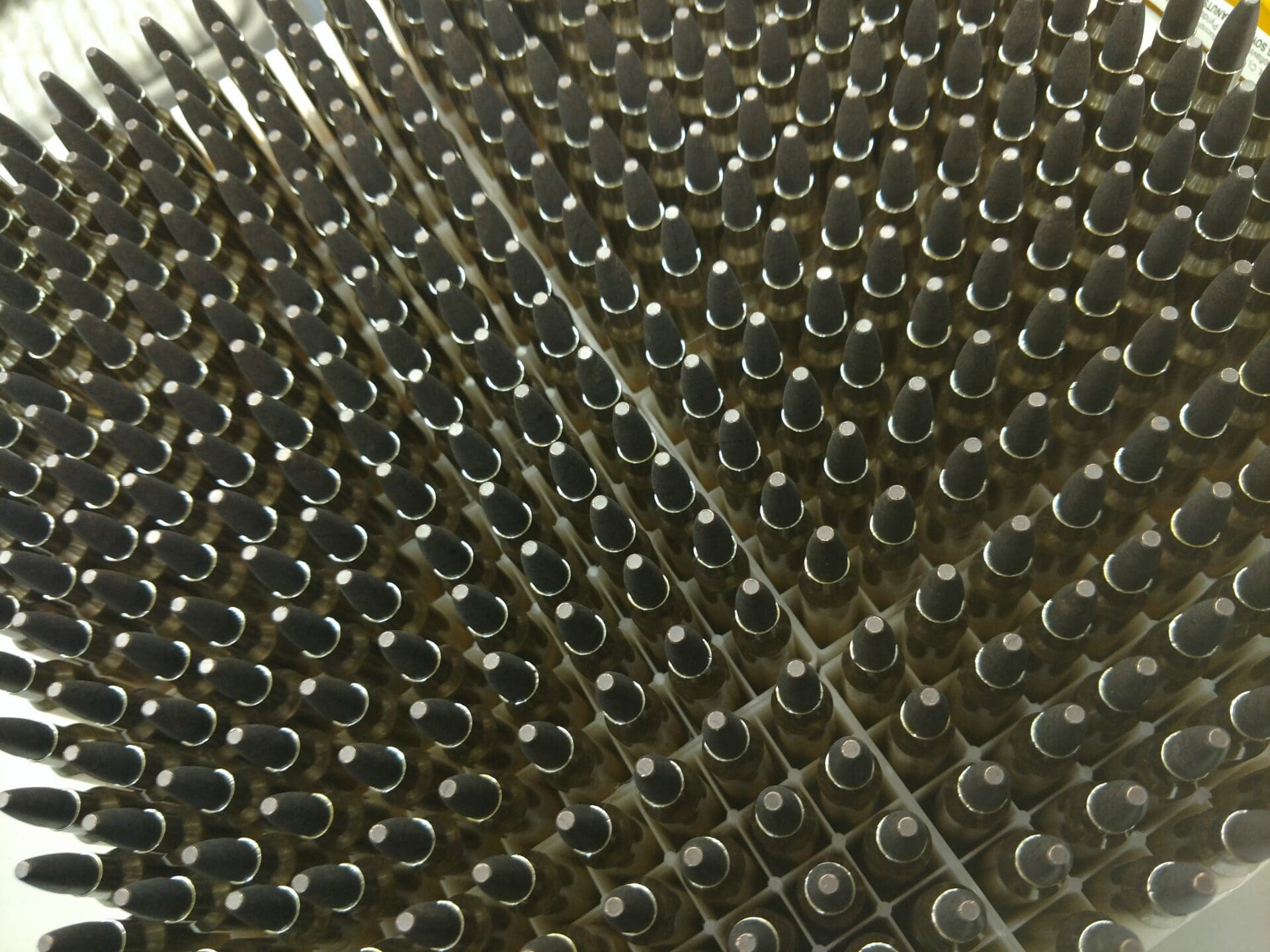
Reader RW writes:
We all do it. Buy a new holster — something more comfortable, concealable, attractive, or potentially faster. We try it out a few times, dry fire a little, and then head out to a competition or for a Wally-walk. How much practice is enough? It’s an important question that you may end up betting your life on. How long does it really take to learn a new holster? . . .
A study published in The Journal of Law Enforcement last year explored this question by analyzing 10 officers using unfamiliar holsters in a timed shooting trial. “Participants completed anywhere from 40 and 78 dry-fire cycles,” before self reporting mastery of the new holster and proceeding with timed trials in which draw-live fire-reholster was timed and measured.
Researchers were cautious about drawing conclusions from a small sample, but reported up to a half second additional delay when switching holsters as well as a reduction in accuracy.
In addition to noting that “dry-firing may not have been similar enough to firing live rounds to be an adequate practice behavior for the field” they also speculate that stress could cause “older automatic behavior to reemerge” further delaying the deployment of a firearm and endangering an officer in a deadly-force situation with a new holster. “In other words, it will likely take several practice sessions before the behaviors associated with the new holster become strong enough to overshadow the behaviors associated with the older holster.”
Make sense? Will that change how long you’ll “practice” with a new holster before carrying with it regularly?





Seeing as the majority of my practice is with a DOH for matches, it seems based on their theory that I would get this delay with my IWB unless I stopped practicing for competition and retrained my muscles exclusively for the carry holster. Oh well, I guess I’ll lose that fraction on my carry holster. I’m sure the regular match practice makes up for it though.
Also, was this a different gun also? Why did their accuracy go down? That doesn’t make much sense.
With Holster A your body expects to move your arm X distance at Y angle. With Holster B, the angle and distance are slightly changed, so until you reset the sight picture, I could buy a slight reduction in initial accuracy the first several rounds. As you settle in, I would expect later rounds to recover.
Hmmm… sounds like poor fundamentals to me. Perhaps they are breaking the shot before seeing the sight picture. Then I would buy it. I would think an increase in time is for finding the slightly altered location and for increased time in getting the gun where you want it to be before the shot.
This ^, in combination with feeling “rushed” if they slightly bobble the draw (or even if the draw didn’t feel smooth). Then they get worried about making the time limit for qualification and rush the trigger pull to make-up for the previous time lost during the draw.
When I switched from strong side to aiwb, I seriously did 2000+ dry draws with the last couple hundred on video (and reviewed), followed by about 500 rounds life fire practice before switching full time. By the end, the timer showed nothing but improvement.
When I switch from my discrete aiwb rig to my deep aiwb rig that sits a little farther over, 10 dry fired or so bring the timer down to where it should be. Without that, it shows about a .2s penalty.
on video (and reviewed)
Just kidding around, but I can’t help picturing Travis Bickle in front of the mirror. “Are you talking to me? Are you talking to me?”
Unless it’s a retention holster I don’t see any adjustment time between holsters worn in the same mode.
The abstract at the link does specify that the study was comparing Level II and Level III retention holsters, so I’m not sure it applies at all to open-top/friction-retention holsters of the type pictured (and often used) by non-cop concealed pistol carriers.
———————
“TIME COSTS ASSOCIATED WITH CHANGING FROM LOWER TO HIGHER RETENTION LEVEL HOLSTERS
Mark D. Thomas
ABSTRACT
Although law enforcement officers may change holsters several times during their careers, the effects of holster changes on performance are not known. The current research investigated the reaction time costs associated with changing from lower to higher retention level holsters. The results indicated that Level III holsters are slower than Level II holsters during the initial change. However, if the holster’s mechanical retention device manipulations can be combined, the reaction time differences are negligible.”
——————-
I own several thumb-activated Level II holsters, and switching from those to a Level III that adds one or more additional security layers to the drawstroke WILL slow you down, as well as increasing the possibility that you will bobble the draw in a stress situation, especially if you haven’t made practice a priority.
It’s one of the reasons all my holsters are alike. No learning curve.
I try to keep all my holsters as similar as possible, too, in design, operation and position. Seems like the sensible thing to do.
Yep. Same brand and model for every handgun I carry. Same butt height and angle, same resistance to withdrawal, same belt position.
I can’t address the questions about retention, as the last one of those I carried was a ’70s-era military flap holster.
http://giphy.com/gifs/forever-the-sandlot-hEwkspP1OllJK
FOR E VER
My holsters all position the grip at the same place and the same angle and this is the main reason why.
Every piece hand made and custom crafted to order.
Some of the shortest lead time in the industry with the highest quality gun leather.
Military and LEO discount.
DanKingCustomLeatherHolsters.com
I’m going to need further info to answer this question.
Are we talking legal or illegally carried pistols?
Are we talking California or the rest of the country?
Are we avoiding the scrutiny of LEO’s?
For some holsters, 40 to 70 cycles may be more than necessary. For others, that’s grossly inadequate.
As an example, SERPA holsters seem to be among the more difficult to master. How many times did Tex Grebner re-holster before he shot himself? Probably a lot, but it wasn’t enough.
A plain-jane leather OWB holster? Eezy-peezy. An inside-the-pocket holster? Better practice a lot and with different pants.
Ralph, I’m pretty sure Tex shot himself during the draw, not during the re-holster phase.
This video link is instructional on this point, NSFW, and funny as hell:
https://www.youtube.com/watch?v=XTGmTrQXrwg
Good catch, but the point is made. SERPAs require practice.
And good on Tex for posting that video. He manned up big time.
Its probably much like when switching carry arms.
How many times do you practice when switching (for those of us that don’t rely on only one catch all firearm).
Before going out to dinner with the snub nose tucked away, do you go out and do a 5000 round live fire to retrain?
If you need to practice so much that you nearly wear the holster out just to shave .1 second from your other holsters time, you may just not have the natural skill for accuracy.
So where do you draw the line?
Then again, most self defense uses are within a few feet and has been proven that novice vs pro both have high accuracy when you’re 2 feet away, so maybe speed of the draw will make or break it.
It’s called OCD, Frank. Some folks have it, most don’t. All I know is I’m happy I ain’t got it. Makes you do things like videotape yourself drawing your firearm hundreds of times. They drive themselves nuts. But to them, that’s normal.
Of course the more that you practice, the better.
Having said that, I apparently don’t need very much practice. I recently had a real event where I had to draw really fast and I had no trouble whatsoever. Prior to that event, it has been over 18 months since I last practiced drawing a few times … and I doubt I have drawn in practice more than about 30 times total.
Now here is an interesting question: does unholstering your handgun every evening (before going to bed) count toward muscle memory for your draw cycle? If it does, then I have at least 1,800 instances of drawing my handgun over the last four years with my current holster. That might explain my fast and accurate draw cycle.
As long as you do it in the same manner, under the same circumstances of dress (if concealed, cover garment still in place), and you end up in a challenge or defensive position immediately after the draw and before unloading (low-ready or on-target, for instance), then I would say yes.
Removing a pistol from a holster really isn’t all that difficult.
No it’s not. But drawing and shooting a target in one second is. Then do it again after changing the cant. Change the retention type. Then try it. The question was how much practice is required to get the same score. If you say none, no one that shoots for timed scores is going to agree with you.
No competitions, thanks. Didn’t realize that’s what was being discussed. Never mind.
I wasn’t talking about competitions. I’ve never been in one. I train with a timer and use that to improve my chances of staying alive when I need to use my gun.
Oh, then I’ll repeat, “Removing a pistol from a holster really isn’t all that difficult”.
Yeah, I gotta agree. In almost every self defense shooting, that fraction of a second and/or lost accuracy isn’t going to make that big a difference. Competition shooting, maybe. But out in the world? Not so much.
After all, how many times have we said that most defensive gun uses don’t even involve shots fired?
none. no practice. make sure it fits and that it’s comfy.
Comments are closed.